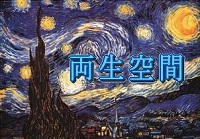6. Paradigm Change of Thought
Japan as the number one in the world
When I was young, attractive foreign countries were those developed countries in Europe and the United States.
In other words, in the long history of the world, the West opened up the fore of world civilization, thus conquering the world, carrying out slaughter, piling up wealth from the world, winning wars, occupying the top of worldwide organizations, having led the world in both senses of good and bad. Because of that, they could claim to be the leaders of the world.
The dominance of the West, briefly speaking, had been existing present for almost all my generation. But as seen in various circumstances and discussions, their world is transferring to a period of gradual decline.
For example, in October 1984, when I arrived on Australia, the exchange rate between the Japanese yen and Australian dollar was around 1 dollar = 220 yen. In the 1985 Plaza Agreement between Japan and the United States, the United States had let Japan, who had become a strong economic power, allow the appreciation of the yen in an order to weaken the international competitiveness of Japanese products. The yen consequently jumped to well over one hundred yen to the Australian dollar in just a few months.
At that time, I had brought into Australia a small but not negligible amount of money which I had saved in Japan. But the amount of my Australian dollar exchange would have almost doubled if I had exchanged it a few months earlier. I was in the mood to blurt out, “if this is the case, tell me beforehand!”
After that Japan fully used a strong yen to literally buy up the world’s assets. In 1989, the Rockefeller Centre Building in New York was acquired by the Mitsubishi Estate Company and this brought a backlash from New Yorkers. In Australia, most of Sydney’s major buildings were owned by the Japanese.
Japan, then the world’s second largest economy, even boasted that it would overtake the United States and become the world’s largest economy soon. It was Japan’s economic peak but the bubble that swelled eventually burst.
If you look at China today, one can find a similarity to the aggressive Japan at that time.
At any rate, the decline of the West has begun to seem obvious gradually as such an economic trend showed.
Twilight of the West
Thus, from the second half of the last century, the limits of the West began to be widely pointed out, and it turns this century, the waning of so-called “advanced Western countries” has become remarkable in various fields. In addition, the chaotic situation in the United States today is seen almost distressingly for my generation who grew up watching popular American television shows, “Raw Hide” or “Lassie” a half-century ago.
Since the Meiji Era, Japan has succeeded the most in westernization herself among the Asian countries and has expanded its Western model to Asia.
The Empire of Japan had colonized Asian countries, then left behind its own imposed peculiar civilization and various difficulties, and it is still struggling to clean up today.
Now, there is a view that Western civilization has already entered the path of decline, and it may be the time when Oriental civilization replaces it. China is the epicenter of this view.
Such a self-righteous view of history in China is that, while it is the central pillar of the Chinese thought having the genealogy of world view from ancient times, the center of the world is China. But now it brings global tensions and be the leading source of instability or concern in the world.
The United States succeed to make a bubble economy in Japan, which boasted formerly that would surpass the United States shortly. It is now placing various demands on China and trying to block its momentum.
While Western civilization has been making efforts to maintain its dominance by taking advantage of its past wealth accumulation, the East has emerged as a new region of growth in the world.
Setting the Senkaku Islands at its northern end, the western Pacific Ocean is now the front line of the East-West confrontation.
It remains unforeseeable to anyone whether the East will surpass the West and the time when the East will become the centre of the world like the ancient period will be revived. However, the sign is becoming a reality year by year.
China is foreseeing the time to overtake the United States on an economic level. And the country is expanding the Chinafication among neighboring countries with the ambitious view that she is the future model of civilization in the world, holding the strategy of “One Belt, One Road” as a foreign policy.
Japan was occupied by the United States immediately after World War II and since then has been a de facto client country for 75 years up to now. Currently Japan has the expanding China as a neighbour, and also has accepted its cultural influence for long as indicated by the use of Chinese characters in its own language. Thus Japan faces an important turning point in what direction and position it will choose.
South Korea, another neighbour, is in a similar position to Japan, but while taking a kind of US-China bifurcated policy, it has caused distrust from both countries rather than synergy.
This historic change in the East-West balance of power and tensions in East Asia is certainly a very important situation, for Japan must not make decisions wrongly.
The Essence of Oriental Thought
In the course of these historical changes in the relationship between the civilizations of East and West, there is a natural shift in the ideas that have been built within such an East-West framework.
Let us look at the East and West relations in the aspect of “restraint” which is the theme of this book.
When the centre of gravity in the world is changing from the West to the East, to take a balanced view one could take up the viewpoint of the Westerner’s to avoiding favour to the Oriental side.
Here is the best reference from that point of view. This is cited from “Zen for the West”, an introductory chapter for Western readers in ZEN BUDDHIZM (2006), written by William Berrett, a former philosophy professor, at the New York University.
At the beginning of this introduction, the following is a clear message that literally spoke to Westerners.
Only a century separates us from Schopenhauer, the first Western philosopher who attempted a sympathetic interpretation of Buddhism, a brilliant and sensational misunderstanding on the basis of meagre translations. Since then great strides have been made in Oriental studies, but a curiously paradoxical provincialism still haunts the West: the civilization which has battered its way into every corner of the globe has been very tardy in examining its own prejudices by the wisdom of the non-Western peoples. Even today when the slogan “One World!” is an incessant theme of Sunday journalism and television, we tend to interpret it in a purely Western sense to mean merely that the whole planet is now bound together in the net of modern technology and communications. That the phrase may imply a necessity for coming to terms with our Eastern opposite and brother seems to pass publicly unnoticed. There are many signs, however, that this tide must turn. (p. viii)
As the title suggests, this book is about Zen, and explains the writings of Daisetz Suzuki, the great Zen master. And the reason for paying attention to Zen thought was that Western civilization was covered by “strange paradoxical narrowness”. Therefore the description not only outlines the transition of Western thought, but explains Buddhist thought as well, and is a very useful summary for Japanese today.
However, it is not the purpose of this book to introduce the whole picture here, and I will show the key arguments only. But it is a valuable work to read. The original book has not been translated into Japanese, but one can read my translation of the introductory chapter “Zen for the West” at the following URL.
(https://retirementaustralia.net/old/rk_0706_gaku21.html))
In this introductory chapter, the professor emphasizes that the characteristics of Oriental thought, especially Zen thought, are “concrete and simple to avoid abstraction”.
To summarize in the Western way, the Eastern counterpart is an intuitive idea. But even with such a Western style explanation, it is not easy to approach this concept of “concrete and simple”.
He uses examples to show how to do it. That is, in regard to the matter-of-fact spirit of Zen.
Before you have studied Zen, mountains are mountains and rivers are rivers; while you are studying it, mountains are no longer mountains and rivers no longer rivers; but once you have had Enlightenment, mountains are once again mountains and rivers are rivers. (p. xix)
To say it plainly, if you remove those rigid views from your eyes, your vision will change. The problem is the idea which blurred your eyes and a way of looking at things.
The reason why I think the journey and the reality to survive are significant is that they form oneness, which is mixing analysis, logic, and abstraction all together in such a complicated experience but they never fall into either one of them and they are still complete and simple.
It is a thing that can be understood even if it is called just “mountains and rivers” as in the above citation. That is, it is a wholistic view which includes such great connotations over everything around us.
Therefore, on the contrary, the idea consisting of disjointed parts through Western analysis sometimes results in much being overlooked, which also constrains yourself.
The above “strange paradoxical narrowness” pointed out by Professor Barrett is one such disjointed part. That is why he says, “[t]he really somber paradox about all these changes is that they have happened in the deep and high parts of our culture (p. xv)”.
To put a change of history in short, the Japanese can cross their own barriers by Westernization, and Westerners can cross their own barriers by Orientalization.
There should be a fusion point to come to terms with somewhere here.

